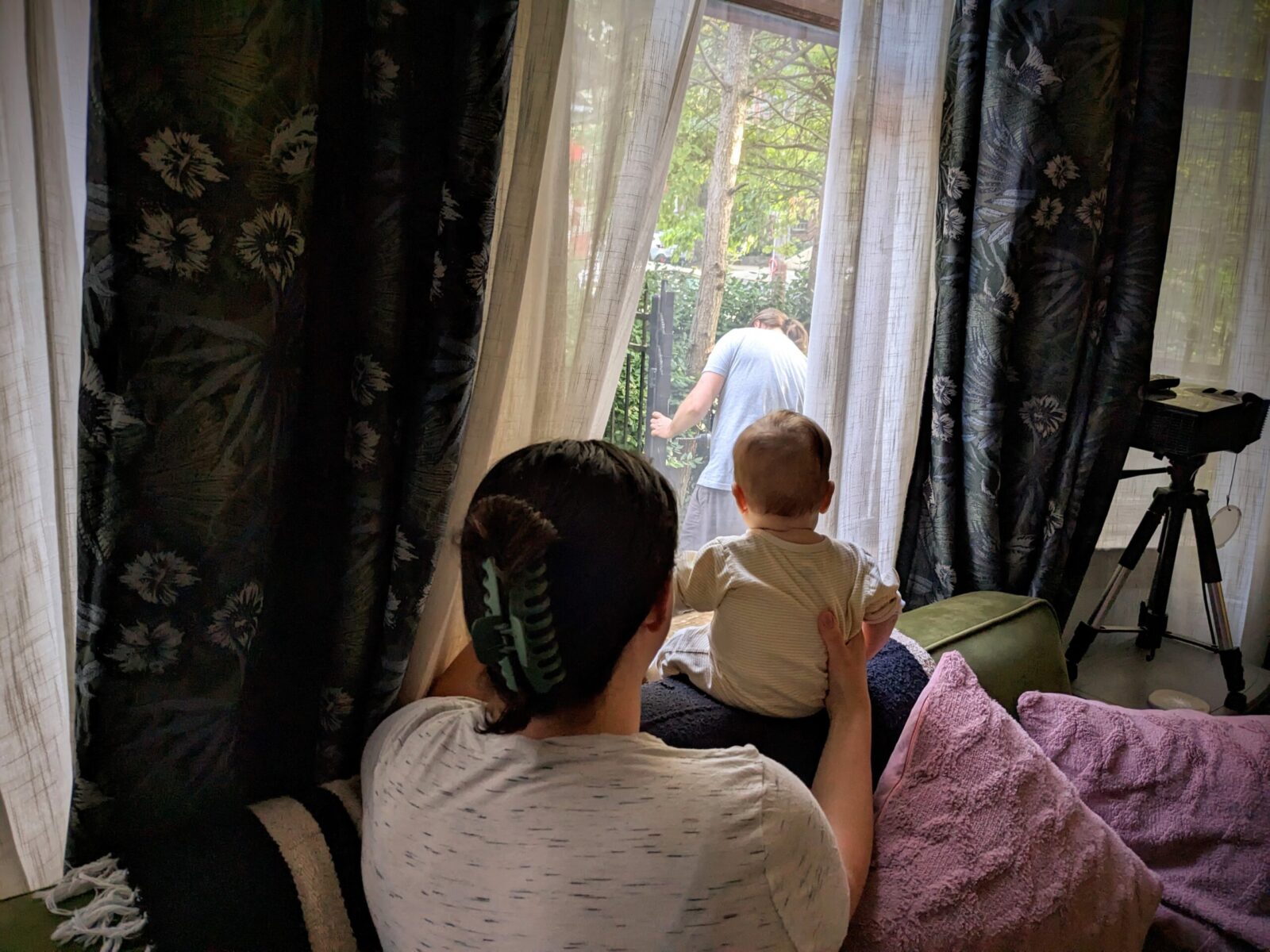How We Cleaned Our Indoor Air
If you’re in the Northeast USA like we are, you’re well aware of the smoke cloud that’s been making its way south from the devastating Canadian wildfires.
I know that Californians, Oregonians, and others have been dealing with similar situations for years, but us East-coasters are a little new to this brand of sh*t show, so I wanted to share with you all some insight we gained from one the many tech tools Jim’s picked up over the years.
Whatcha Got in That Air?
Jim picked up this air quality monitor a few years back to keep an eye on our radon levels in the house, as radon is often an issue for houses & basements in our area. While our radon levels are good, we’ve been keeping the monitor in the twins’ room because it does a few other things we like.
In addition to temperature and humidity gauges, it can also track VOCs (like paint fumes & cooking gas), CO2 levels (which can indicate a need for air circulation), and particulate matter (such as dust or the tiny particles that float around when something burns).

What Happened This Week
This week, Jim noticed the particulate matter reading, known as PM2.5, was a lot higher than usual. After trying to figure out if I’d forgotten another piece of pizza in the oven, we went online and saw the news about the wildfires and their effect on our air here stateside.
Since we had the air quality monitor, we were able to see just how much the air inside our house was being impacted. But more importantly, we were able to see what helped get the air back to healthy levels.
PM2.5 refers to any particulates that are smaller than 2.5 microns, which you might also hear referred to as “Fine Particulate Matter.” A human hair is around 60 microns, for comparison.
- Ideally, the PM2.5 reading inside of a house should be under 12
- At one point, ours was up to 110 inside the house, and as high as 405 outside
- Once we ran our purifiers and filters, we got the reading back down to 4
What We Did
First we moved our standalone air purifier into the twins’ room. It’s several years old and we had to vacuum out the old filter because we didn’t have a new one, but it’s HEPA rated and did a really nice job of immediately reducing the particulate matter reading in the room.
After a few rounds of opening and closing the doors, however, we could tell that new particulates were coming into the room any time someone went in and out. This told us that we still had a pretty significant air quality issue happening in the rest of the house.
The next step was to adjust our thermostat to run the HVAC fans intermittently, regardless of whether the air conditioner needed to kick on or not. The central air unit runs through a filter, so all that new circulating air would help push fresh-filtered air into the space.
This helped us get the PM2.5 levels back down to healthy levels inside the twins room, as well as throughout the house.
What To Do Next
• If you have a central air unit, or even a good wall unit, see if you can run your fans even if the AC is off so that you can get fresh air into the space.
• Check that your filter is good, and get yourself a replacement if you haven’t already. It’s likely that your current filter will need to be replaced sooner than usual, since it’s filtering more bad stuff and will be running more for a couple days.
• If you don’t have a central unit or just have someone at home who is extra sensitive to air quality issues (babies, those with asthma, people suffering from lung conditions or long Covid), we also saw a really good improvement with a standalone air purifier. Make sure you get one that is HEPA rated for best results.
A Few of Our Picks
Click on the “+” squares in the image below for direct links to HEPA air purifiers we recommend
*commissionable links*









Leave a Reply